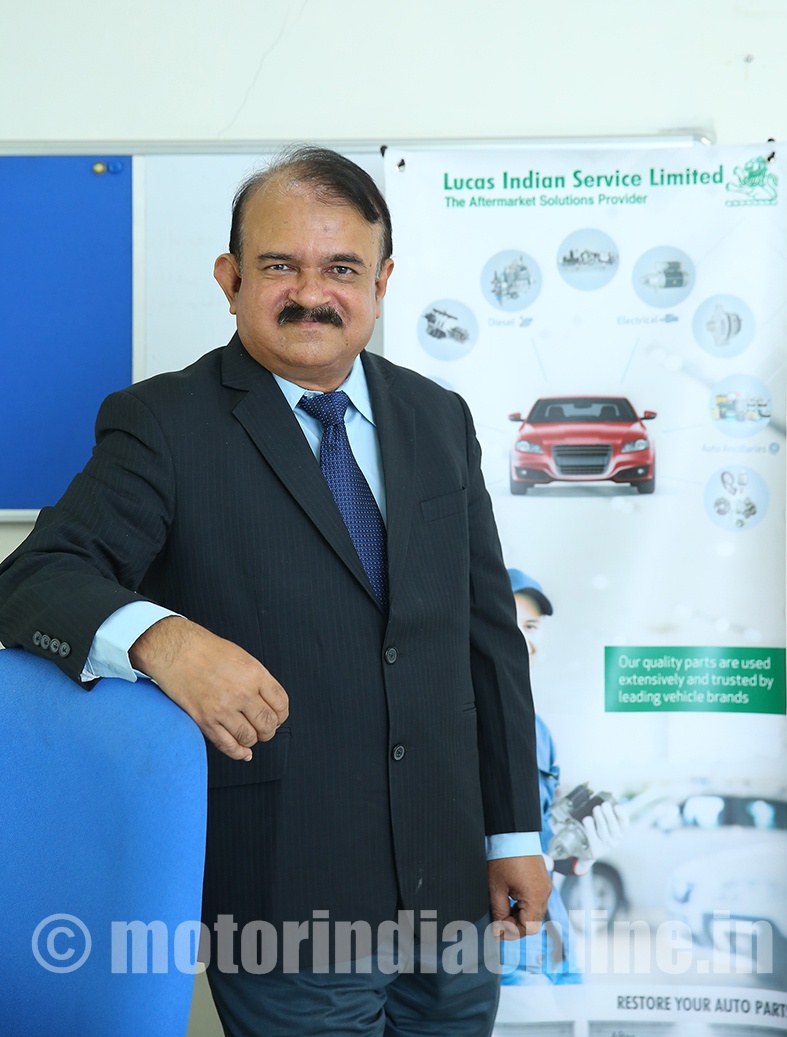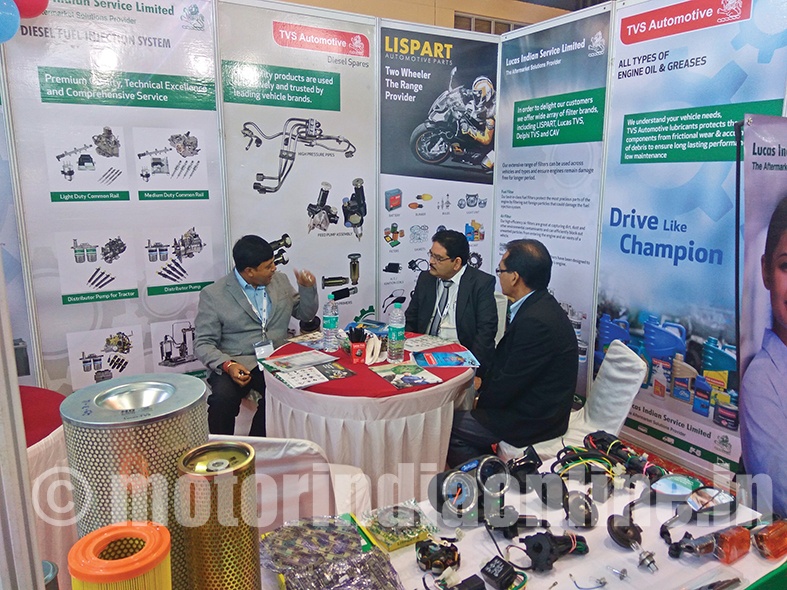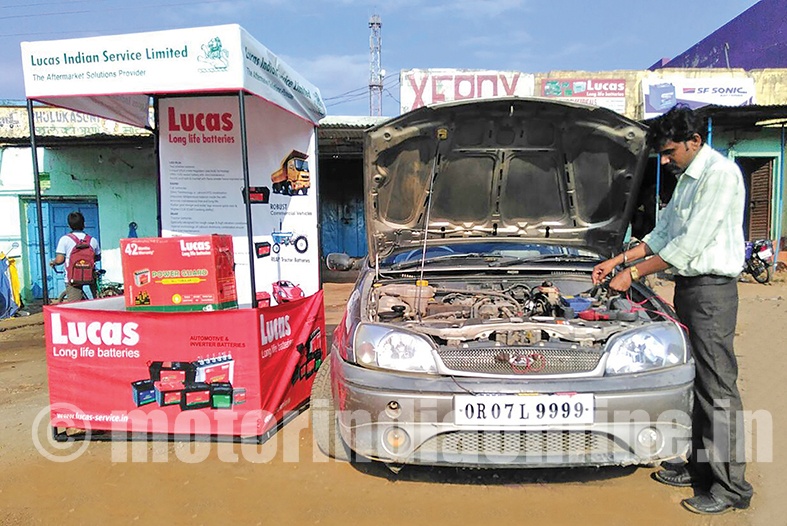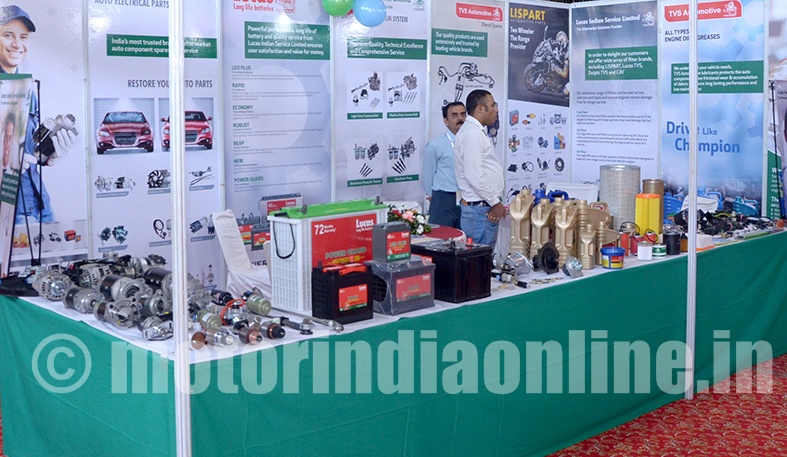Since 1930, Lucas Indian Service (LIS) has been serving the Indian automotive aftermarket, manufacturing its own ignition coils and solenoid switches, and distributing a wide range of auto-electrical parts, fuel injection parts, automotive batteries, radiator fan motor assemblies, glow plugs, synthetic lubricants, engine coolants and a complete range of filters. From being just a parts supplier in the replacement market, the company has emerged a complete aftermarket solutions provider for a full range of vehicles – two-wheelers, three-wheelers, cars, commercial vehicles, tractors and off-highway vehicles.

True to a company that leads the way with foresight, LIS sees the challenges ahead as opportunities for growth and finds no reason to be adversely concerned about developments in the market. Mr. S. Muralidharan, President, Lucas Indian Service, talks about various issues including demonetization, sweeping changes taking place in the aftermarket, company plans & focus areas, and more, in an exclusive interview with MOTORINDIA.
Excerpts:
Considering the changes taking place in the auto industry, what do you see as the main challenges and opportunities ahead for the aftermarket sector?
The aftermarket as a whole is clearly undergoing a great structural change. We have a lot of new vehicle models on road, the number of part numbers needed to service these models is increasing significantly and the quality of the parts is improving; so the rate of potential growth is not equal to the rate of vehicle population growth. Put all these together and we will have a rather confused state of affairs in terms of market potential; but that’s what makes our business exciting.
Competition is increasing significantly from the organized sector but it’s not just the organized and less organized players, we have all the OEMs wanting to enter the aftermarket.
The number of geographical locations where the aftermarket potential exists is also increasing. Let’s say, earlier we had 10 top cities with a large population of cars and some 50 to 60 towns with many two-wheelers; now we have over 800 to 1,000 towns which have a huge vehicle population, so overall we have a very widely dispersed geographic spread of vehicles which calls for suitable aftermarket support.
Where is Lucas Indian Service doing differently amidst such a changing market environment?
Lucas Indian Service has transformed itself from just supplying parts to becoming an complete aftermarket solutions provider; this is not just a tagline, it is what we want to be and what we are working towards. Firstly, we will be present in all channels – not just in trucks & buses, but also in cars, tractors, two-wheelers and three-wheelers. Secondly, we will be multi-brand, because in India customers want brands; the era of one mega brand is possibly over. But the backbone of our business is going to be service as suggested by our company name. We have our own authorized service stations and service not just starters and alternators but also specialized products such as diesel parts.
Do you see scope for innovation in the service side of your business?
We will soon be starting Lucas India Tractor Service stations in different parts of the country. It is a common assumption that tractors do not require focused service, but today the villages either have their usual road-side garage or the top-end OE service outlets; in between, we find enough space where we can plunge in and do some serious work. We are have our first such outlet in the state of UP and are in the process of appointing the first batch of partners. With this move, we feel we are pioneering a change in the Indian automotive industry in our own way.
On similar lines, we are looking at setting up focused service stations for other channels as well – trucks & buses, auto-electricals, fuel injection, etc. So, apart from offering parts to our customers we will also provide focused service which is a significant forward step for us.
Technology adoption has become inevitable, even for the segments like the aftermarket now. How tech-savvy has LIS become?
We are trying to step up the use of technology to improve the productivity of our sales team and our dealers’ sales teams. We have our own app and portal for taking orders directly from the smallest retailers and dealers and are also modernizing our web page. We are present in the online market place via tie-ups with Amazon and Snapdeal but it might be too early to measure the success in those areas yet.
Overall, we see a clear movement towards digitalization which makes our business more transparent and has brought in a totally different level of connectivity than before.
How do you think the aftermarket would cope up with all the radical changes taking place, like the shift to BS-IV, for instance?
The aftermarket and the auto industry per se have always handled challenges, embraced technology and adapted to changes; just that there will be some players who lead and others who lag. There was a time when we had BS-I emission norms, now we are moving to BS-IV; similarly we have come a long way in many other areas. The winners will be the ones who lead the way and those who take off the block the fastest and adapt quickly.
Having said that, what might actually be a challenge is if newer equipment keeps coming into the market, the return of investment becomes a challenge and consequently the cost of servicing goes up along with the working capital. This is something the sector needs to be prepared for.
Lastly, how do you expect the market to move in the upcoming fiscal? What kind of growth is LIS targeting?
The market will grow for sure; there will be no issue of not growing; it will only be about how fast we can grow. The vehicle population is growing, vehicles need to be repaired and will need parts; it will boil down to whether I capture that share or somebody else does. We will close FY17 with a strong double digital growth and there is no reason we wouldn’t be able to do the same in FY18 as well.


